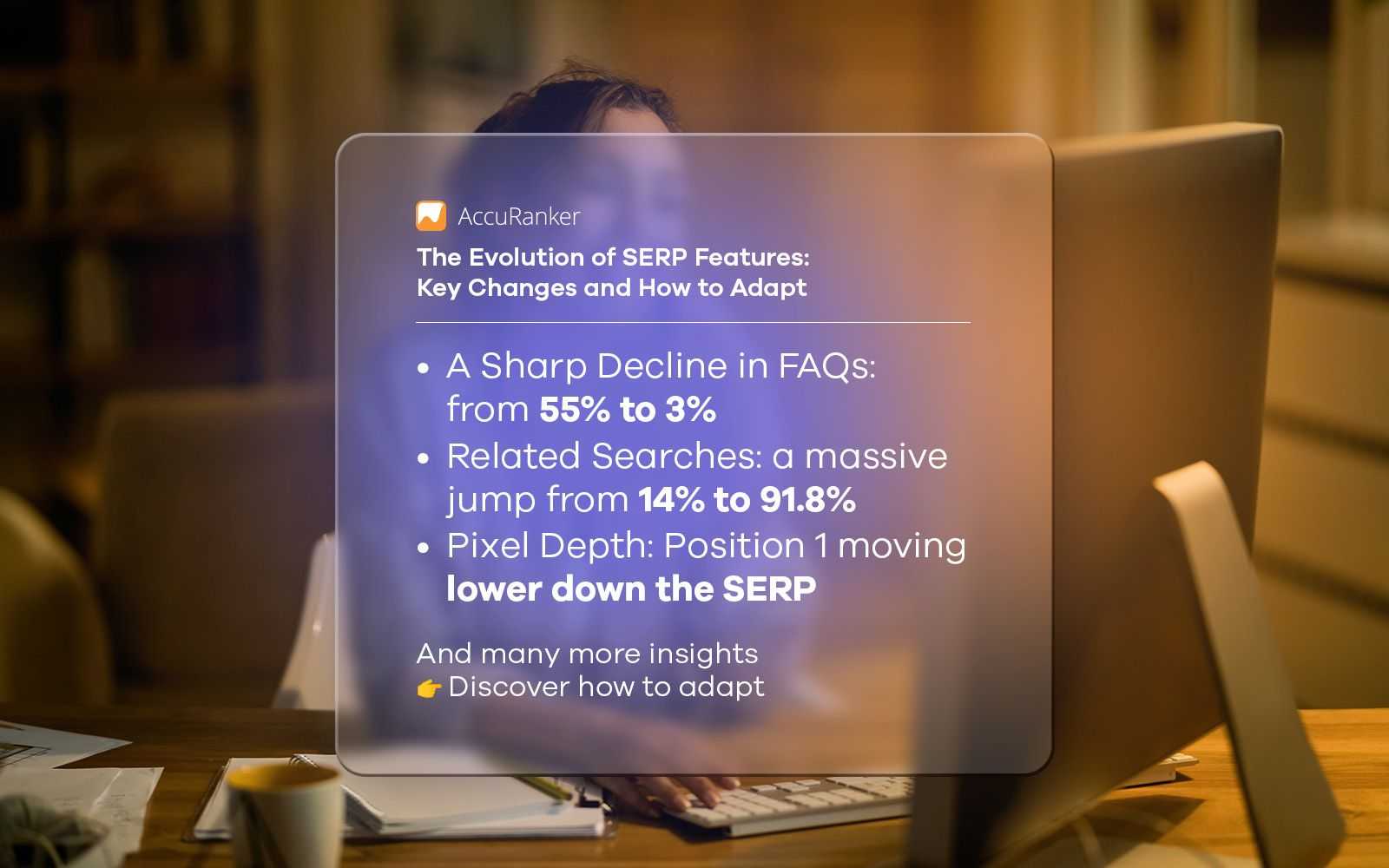GA4 Custom Reports for PPC Explained
Last updated on Tuesday, January 16, 2024
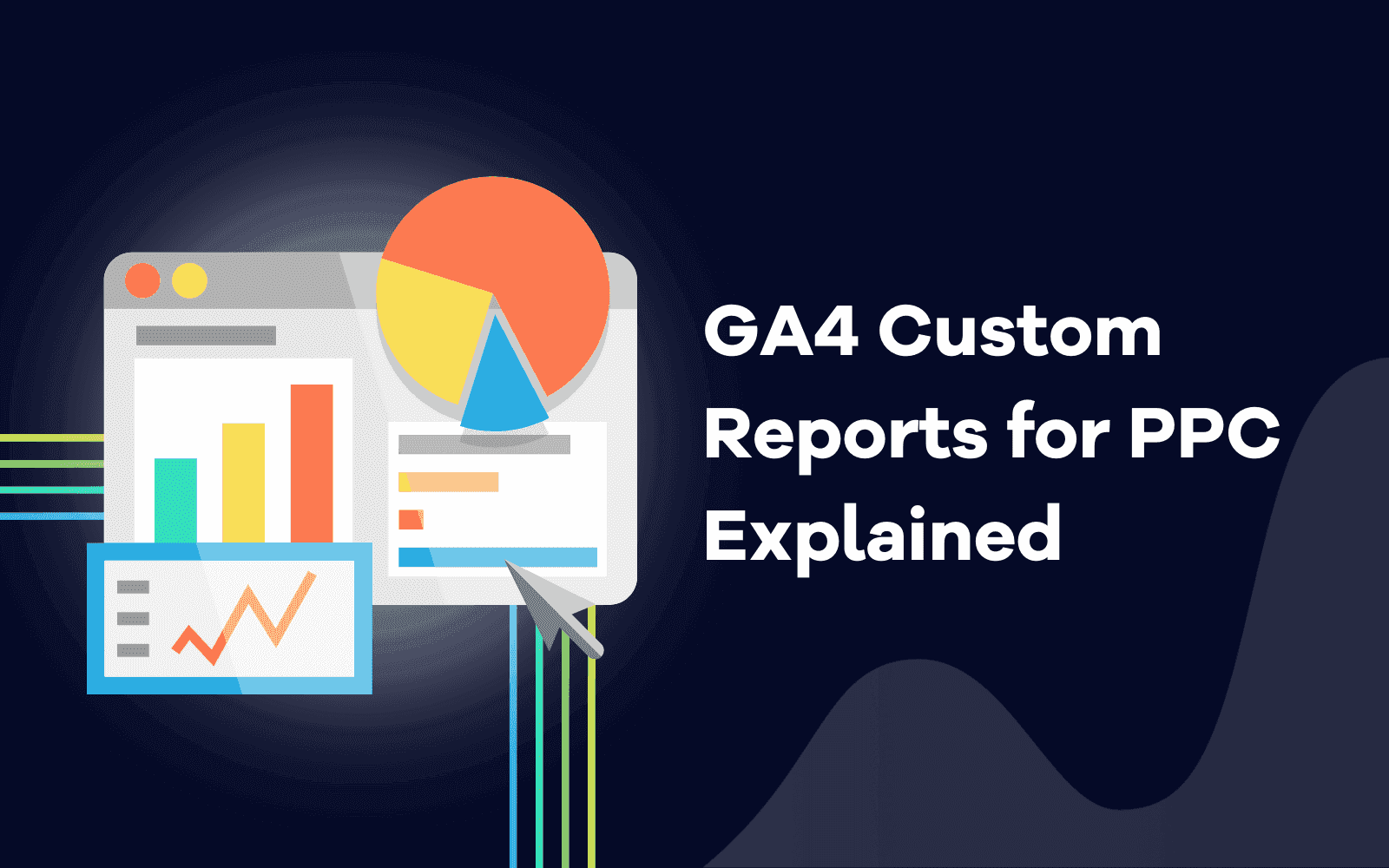
Data-driven strategies are pivotal in digital marketing. One of the prominent components of such a strategy is utilizing analysis. While marketing analytics is beneficial, we can't help but discuss its role in PPC campaigns, particularly leveraging Google Analytics 4 to track your campaign performance.
Marketers had to switch to GA4 last year and adjust to its functionality, including the reporting features. As a result, it divided specialists: some use default reports, but some PPC professionals customize their reports based on their needs. In general, Google Analytics 4 provides the option of custom reports, which helps track ad campaign results with chosen dimensions and metrics.
This article will explore GA4 reporting capabilities, benefits and challenges of custom reports in GA4, and how you can create a PPC report on this platform. But let's start with exploring default and custom reporting.
Default or Custom GA4 PPC Reports?
Default reports in Google Analytics 4 offer an immediate way to access standard metrics and dimensions, providing insights into specific aspects. These pre-configured reports require no additional setup, making them readily available for users.
There are two main types of default reports – overview and detail reports.
Overview Report
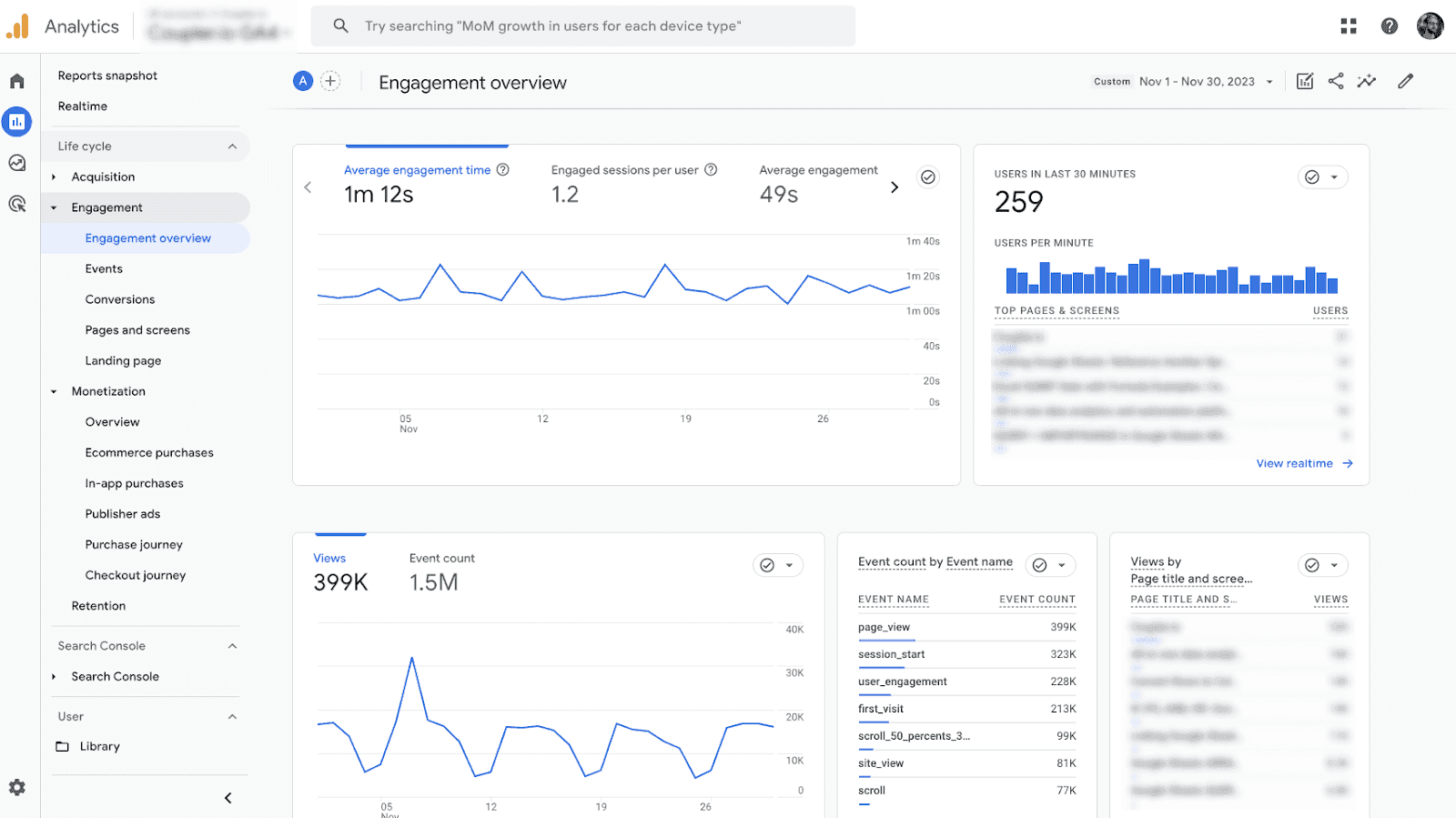

The default reports in GA4 cover a broad range of PPC-centric data points, making them a valuable resource for beginners and those requiring swift access to metrics without extensive setup.
As PPC data starts flowing into GA4, it initially appears in the Realtime report and populates other PPC-related reports shortly after. While some data is automatically collected, additional setup may be necessary for specific types of information.
The default GA4 report provides a general overview of your campaign performance. However, they may not delve into the details you need to analyze your PPC campaigns thoroughly.
Default dimensions offer insights in various categories:
User demographics: Age, Gender, Interests, Location
Technical details: Device category (mobile, desktop, tablet), Browser
User interactions: Session start time, Page views, Event triggers
Acquisition channels: traffic source (direct, organic search, paid ads, social media).
These measurements help to understand user behavior and optimize PPC campaigns.
On the other hand, custom GA4 reports offer a more tailored approach. They allow you to focus on specific metrics. It covers adding and removing metrics and dimensions, applying filters, changing sorting criteria, adding a secondary dimension, updating reporting collection, and using report settings for further exploration. This can lead to more detailed insights into your campaign performance.
It is possible to create up to 150 custom reports per property in Google Analytics. It's also possible to customize both detail or overview reports.
Note: If you do not see the option, you don't have permission to customize the detailed report.
By setting up custom dimensions, like product categories purchased or User IDs you gain the flexibility to delve deeper into the details of your PPC data.
Custom Dimensions and Metrics in GA4
Setting up the most critical custom dimensions to use them best is essential. This will help you capture key data insights crucial to your objectives. Once you have set up the most important, you can move on to the lesser impact.
Depending on your goals and the level of detail required, a combination of default and custom dimensions may provide a comprehensive understanding of your PPC performance.
Custom Google Analytics Reports for PPC
While default reports provide a good starting point, GA4 custom reports are often more useful for PPC. You can customize your Google Analytics reports to focus on the metrics that matter most to your campaigns, such as cost per conversion.
A starting point with report customization is to tune up basic reports. For instance, you can customize the basic report Life cycle – Acquisition – Overview.
Upon selecting "View Google Ads Campaigns," you'll gain access to a comprehensive overview of your campaigns.
This section provides campaign names, user engagement, session data, revenue metrics, costs, event counts, etc. Furthermore, you can explore more profound insights into ad groups, keywords, ad network types, and account-specific details.
You can begin customizing by adding any necessary metrics or dimensions to this report.
But before we dive deeper into the customization of reports, let's discuss the benefits and some limitations of GA4 custom reporting.
Benefits of GA4 custom reports
To better understand the custom reports in PPC, there are four key benefits of leveraging them.
Tailored views - Custom Google Analytics reports offer greater detail into what's working with your website and what's not. It helps you understand your ads' effectiveness, your audience, the conversion funnel, and every step thereof.
Advanced segmentation - With GA4 custom reports, you can segment your data based on specific criteria. This can help you identify trends, patterns, and areas of opportunity that may not be visible in standard reports.
Deep comparative analysis - Custom reports enable you to compare metrics, dimensions, and segments to understand how your business performs.
Automation - Once you've set up custom reports in GA4, it can automatically update with the latest data, ensuring you always have up-to-date insights.
The flexibility of GA4 custom reports allows for quick adjustments. You can also combine these reports with your PPC dashboard or other reports for a detailed ad analysis and faster decision-making.
Challenges of custom reports in GA4
Apart from benefits, creating custom reports in Google Analytics 4 may entail some challenges.
Transition from Universal Analytics - Google Analytics 4 operates on a different data model than Universal Analytics (UA). Instead of being based on sessions and pageviews, the GA4 measurement model is based exclusively on events. This shift can be confusing.
Learning curve - Let's be honest: we all felt frustrated initially because GA4 seemed complex, and some common functions are handled much differently than in UA. Even for tech-savvy users, the platform can be difficult to navigate and understand. So, even seasoned PPC specialists need some time to adjust to its functionality and customize first reports.
Integration limitations - Advertisers use many tools for handling campaigns, and having a set of useful connectors can be a lifesaver. GA4 has native connectors with Google products, like BigQuery export or Looker Studio integration for data visualization. However, currently, there are very few third-party integrations available for GA4. This can limit the platform’s functionality.
Missing or modified metrics - Some familiar metrics and reports from UA are not available in GA4. For instance, the bounce rate was absent for some time. Now, it's back, but the concept of bounce rate has been completely changed. Today, the GA4 bounce rate is the inverse of the engaged session rate. To be considered engaged, a user must remain on the website for over 10 seconds, trigger a conversion, or view 2+ pages. The same applies to historical data: GA4 has limitations in overviewing historical data of campaigns, affecting long-term analysis and trend identification.
Remember, while GA4 presents challenges that make creating custom reportings harder, it also offers many new features and capabilities. That's why it's time to start customizing PPC reports in GA4.
How to create custom reports in GA4
Crafting reports for PPC campaigns can be an intricate process that requires attention to detail. To create custom reports in GA4, you need to pick the necessary metrics and dimensions, filter data, and choose a suitable visualization technique.
Here's a step-by-step guide to help you navigate and customize detailed Google Analytics reports:
Step 1: Access custom reports
Start by going to the Google Analytics 4 interface. Choose Library in the left navigation.

Step 2: Choose the report type
In the Library, click on "Create new collection" for a fresh start or choose a predefined template. After setting up a collection, add topics (up to 5) by clicking "+ Create new topic."
Drag and drop either a Detail report or an Overview report into your topic. Each topic can have up to 10 reports.

Save and publish your collection to make it accessible.
Step 3: Add dimensions and metrics
In detailed reports, add dimensions or metrics under ''Primary Dimensions'' by clicking "Add metric":
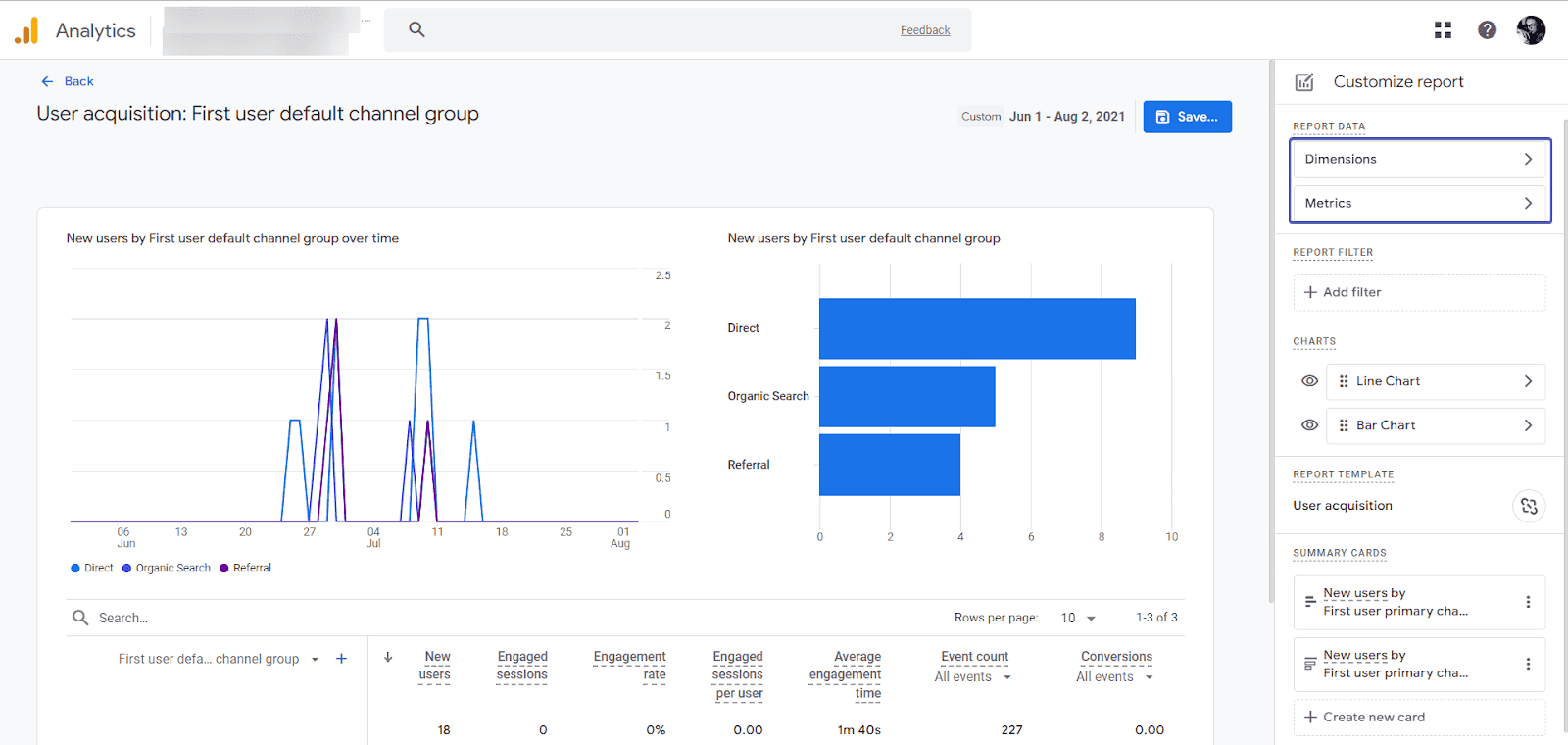
Select the required dimensions/metrics and click "Apply."
Note: For PPC campaigns, you can focus on these essential dimensions:
Source/Medium, Campaign, Search Query, Landing Page, Geographic. Consider choosing these metrics: Engagement Rate, Conversions, Average Engagement Time per Session, Users, Revenue, Event Count, Engaged Sessions per User, etc. You can analyze traffic performance by location for adjusting PPC location targeting and bid adjustments and gain insights on landing page performance for PPC campaigns.
Apart from these basic steps to create a GA4 custom report, you can consider additional options for customization. Particularly,
Applying filters - Isolate specific data, like paid search traffic, by adding filters.
Secondary dimensions - Add these for more detailed analysis, like assessing landing page performance for different search engines.
Add customized charts - Select visualizations to display at the top of the report.
This structured approach will help you create insightful and highly customized reports for your PPC campaigns. As it's mentioned above, these are steps to personalize your Detail GA4 report. There are also options to make a custom report using the "Exploration" tab in Google Analytics.
An Example of GA4 Custom Report for PPC
I'd like to share one example of a GA4 custom report from the "Exploration" tab. This one helps to analyze Google Ads search terms deeply.
This report comes from the "Free form" exploration technique.
The rows include the "First user campaign" and "First user Google Ads query" dimensions. I filtered the "First user campaign" dimension to view data from the required campaign. In the columns, the "Event name" dimension is present.
One should also apply filters to the chosen dimension for specific events. In my case, these are 'page_view', 'scroll_50_percent_30_sec', 'sign_up', and 'activation'. As a metric, I’ve chosen 'Active users.'
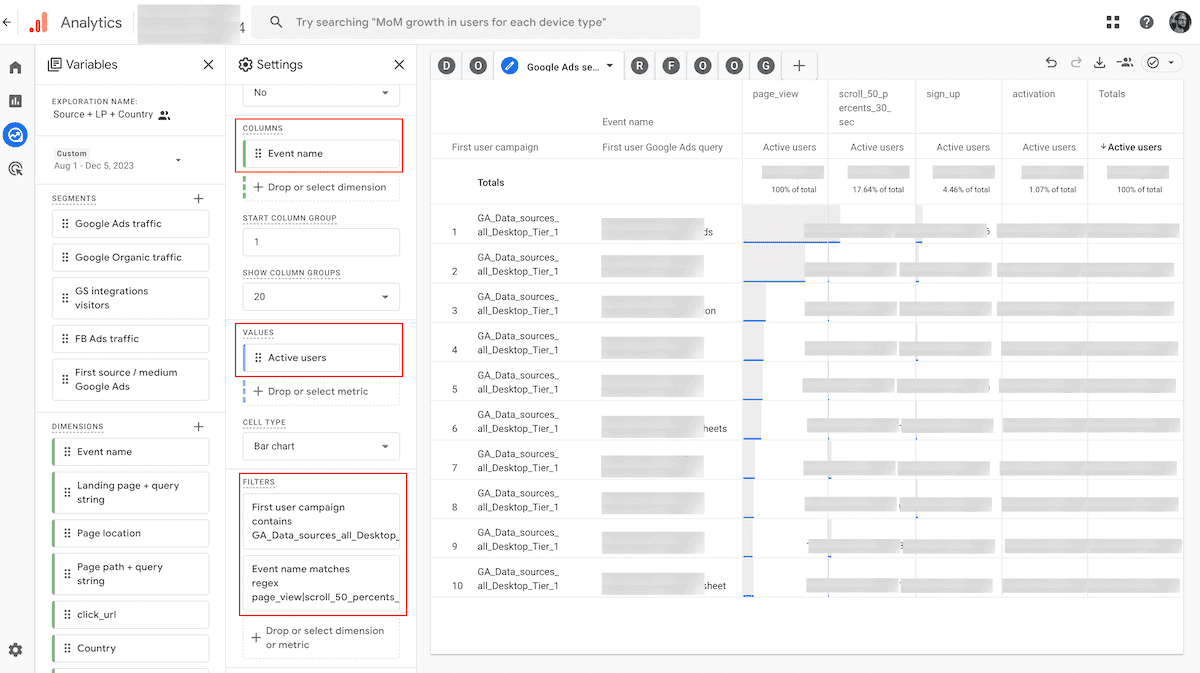
With this custom report, you'll be able to understand how traffic from specific search terms behaves on the website and within the product:
How many users visited for the first time using a particular search term
Whether they scrolled through 50% of the page and stayed for more than 30 seconds
If they signed up for the free trial
Whether they activated (tried) the product
This way, you can make better decisions on which Google Ads search terms drive a more engaging audience and which you should pause.
Wrap up
As you see, Google Analytics 4 offers customization options that come in handy for performance marketers.
In PPC, having tailored reports with accurate and consistent data is crucial. Whether adding or removing metrics, applying filters, or exploring data further, the GA4 custom reports enhance the ability to derive all these insights and empower your campaigns.
Remember, the key to successful PPC campaigns is continuous learning and optimization based on data-driven observations. So, I hope this post has inspired you to build effective PPC reports in 2024!
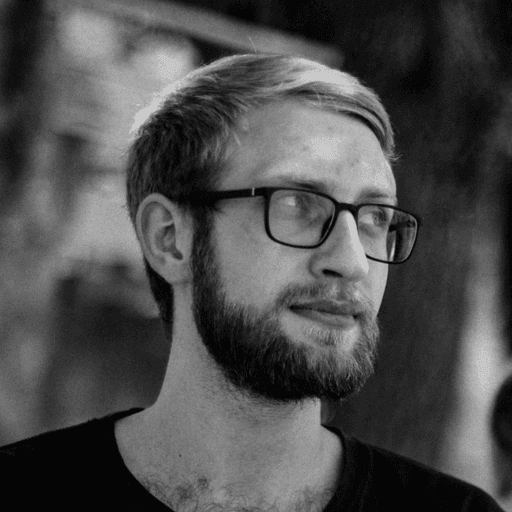
Article by:
Borys Vasylchuk
Performance Marketing Expert
Borys Vasylchuk is a Performance Marketing Expert at Coupler.io, a platform to turn complex data into simple reports. He has over 7 years of experience, primarily in B2B/SaaS products, with the main goal of making ads profitable for businesses. Apart from that, Borys enjoys traveling, listening to various genres of music, and collecting vinyl records.


